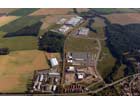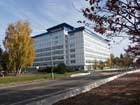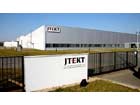Trade and Industry/City of Industry
City of Industry
In modern day history the year 1845 was an important milestone for the town thanks to the arrival of the railway network to Pardubice. Pardubice soon became a significant traffic junction and together with its advantageous position in the centre of the Czech Republic industry was encouraged to move to the town. In the latter half of the 19th century Engineering and Food-processing industries began to develop. At the beginning of the 20th century these were joined by Chemical and Electrical engineering industry companies and Pardubice started to experience a boom. Up until the seventies of last century Pardubice was the fastest developing city in the former Czechoslovakia. The number of its inhabitants increased to almost one hundred thousand. The Chemical industry was represented primarily by Synthesia, the manufacturer of the world renowned explosive Semtex. The Electrical engineering industry was linked for many years to the company Tesla, the manufacturer of the Tamara radio locator and today's passive radio locator known as Vera. The former site of Tesla is now home to the Taiwanese company Foxconn which employs 5000 people and is one of the largest European computer manufacturers. It is the second largest exporter in the Czech Republic after the Škoda car manufacturer.
The industrial zone is situated on the western edge of the city of Pardubice approximately 6km from the city centre. It can be found in the cadastral area of Staré Čívice between the I/2 main road leading to Kolín and Prague and the main railway line between Prague and Pardubice, a part of the international high-speed corridor between Berlin – Prague - Vienna.
The city of Pardubice currently owns all 71 hectares of land and according to the city plan the industrial zone could be extended to 120 hectares. The location is designed for light industrial production, manufacturing and strategic services or technology centres. In line with the city's industrial traditions companies involved in electrical engineering, chemical engineering and the growing automobile industry and well supported.
Educational establishments in Pardubice have also been influenced by these branches of industry. The city has an electrical engineering vocational college and secondary school. The University of Pardubice with schools focusing on chemistry-technology and transportation opened a new Informatics institute in 2001 and an Electrical engineering study programme in 2003, which were later turned into the Faculty of Electrical Engineering and Informatics.
Advantages of the industrial zone in Pardubice are its position on the edge of the city thus providing high quality social, cultural and sporting facilities for this city with a population of 90,000. There is a qualified workforce here particularly for the industries of electrical engineering, chemical engineering, and engineering in general, not forgetting research and development (VÚOS, SYNPO, etc.). Another advantage offered by the city are the ties between educational institutions and local industry (Faculty of Chemical Technology, Jan Perner Transport Faculty, and the Faculty of Electrical Engineering and Informatics of the University of Pardubice, but also the secondary electrical engineering school, etc.). The presence of foreign educational institutions such as The British Centre, Alliance Francaise and Goethe-Zentrum is also important to note.
The city of Pardubice offers its industrial zone to investors primarily through the medium of the regional branch office of CzechInvest, the government agency for foreign investment. In 2002 the Pardubice zone was the only one to be recognised by CzechInvest to be a fully prepared industrial zone. In 2003 and 2004 it achieved 2nd place in the category of Zone bringing the greatest economical benefit. The zone is also proud to have received a certificate of industrial zone accreditation in 2003, also from the CzechInvest agency. In 2007 it reached 3rd place in the competition Business premises of the year for the premises providing the greatest economical benefit.
Land bought by the city for the purpose of building the industrial zone is linked to Free Zone Pardubice, a.s. which has already been in operation for a number of years. The advantages of the free zone sitting on land covering an area of over 6 hectares is utilised at present by several manufacturing and sales companies. This is the only duty free zone in the Czech Republic which has facilities for assembly, storage and manufacturing.
The whole of the industrial zone already has a sufficient level of investment. Plots can be connected to all utility networks, and an access road, footpaths, and cycle paths have been constructed. A city bus link also services the industrial zone and in 2001 a flood protection system was built to protect the whole site.
One of the advantages for future investors is the site's close proximity to the international airport located a mere 2km from the industrial zone. The civil part of the airport is run by East Bohemian Airport, which is now dispatching a significant amount of civil, cargo, and also charter flights. Other advantages offered by the city of Pardubice are its fully built industrial zone, relative closeness to the capital and excellent transport accessibility by all modes of transportation (road, rail, plane, and planned river transport) and also the existence of a Technology park (TechnoPark Pardubice) directly within the industrial zone.
Thanks to all of these factors Pardubice's industrial zone has ambitions to become a fully occupied zone with a reputable name not only in the Czech Republic.

.jpg)


